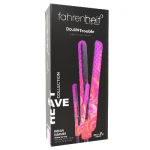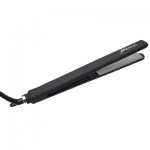If it’s winter or you just don’t expose your legs much, there’s a chance you might be neglecting an important self-care step for your body: exfoliation. Although it gets overlooked frequently, exfoliation has the ability to transform legs, the same way it can with faces. When exfoliation is done properly, circulation is boosted and even the appearance of cellulite can be reduced by taking away dead skin cells that are resting on the skin’s surface.
For gorgeous and more importantly, healthy leg skin, regular exfoliation is important and there is a best way to exfoliate legs. Below, we’re diving into all the details you need to know, so stick around and read on!

Benefits of Exfoliating the Legs
Getting your dream legs can be as simple as adding exfoliation to your skincare routine. Naturally, our skin cells replenish on a monthly basis, but sometimes dead cells collect and create dry, patchy areas of skin. When this happens, exfoliation can really save the day.
When you remove dead skin from areas that are prone to cellulite, the skin will appear to be more toned. Exfoliating the legs can also help prevent those pesky ingrown hairs that occur with shaving. When dead skin cells stay on skin, there is a higher likelihood that hair follicles can become blocked and this is where the development of ingrown hairs occurs.
Lastly, when you combine exfoliating with massage, you effectively boost circulation and reduce any swelling in the leg at the same time. When the blood is circulating well in the legs, many things improve, such as skin surface color, function, and texture.
How to Exfoliate Your Legs
When it comes to exfoliating legs, there are a few steps you can follow to get the job done properly and achieve the silky legs you’re looking for:
- Dry Brush: The reason dry brushing is so helpful is because it increases circulation, supports lymphatics drainage and exfoliates the skin. For proper brushing of the body, apply gentle pressure while brushing in an upward motion toward the heart.
- Body Polish: Next, once you’ve dry-brushed your legs, it will be good to follow up with some body polish to exfoliate, cleanse, and smooth out bumpy or flaky skin.
- Oil: Right after you’ve polished your legs, hydrating your skin with oil is the way to go. In this step, you effectively restore moisture to the skin and rebuild its barrier.
- Moisturize: A great way to reinforce the oil you just applied to your skin is by following it up with a good moisturizer. Tip: go for a cooling lotion, as that will help with any mini cuts that can happen during shaving and such.
DIY Exfoliation
If you’re aiming to do some budget-friendly exfoliation with items you already have in your home, that’s more than possible!
If you have brown sugar and olive oil, you can make a wonderfully-smelling exfoliating scrub from just these two ingredients. Brown sugar contains glycolic acid, which helps remove dead skin from legs while olive oil provides antioxidizing power that helps protect your skin from environmental damage. So, don’t be afraid to hit the pantry for your exfoliating needs!
How Frequently Should You Exfoliate?
Exfoliating the skin, be it the face or legs is very beneficial and should be performed on a regular basis. However, there is such a thing as over-exfoliation. When too much scrubbing of the skin occurs, trauma and inflammation to the surface of the skin can arise.
How often you should exfoliate depends on the condition and sensitivity of your skin. As a general guideline, though, one to two times each week is a good frequency if you’re not a shaver. And if you are a shaver, but would prefer to use a different method for hair removal that doesn’t involve cutting the skin, check out our post on the 3 Best IPL Hair Removal Devices. Plus, don’t forget to add moisturizer to your skin after exfoliating to prevent irritation or dryness.
If you happen to have dry, sensitive skin, it may be best to leave exfoliation as a practice you do every other week with gentle products. Oily skin? Aim for a product with a BHA (for example, salicylic acid) and use it on an every-week basis.
Once you’ve exfoliated, if you’re worried you may have overdone it, search for skin that’s tender upon touching it and looks to be inflamed or red. If you find such skin, you have probably exfoliated too much. No worries, though, simply use a gentle moisturizer and let it heal!


